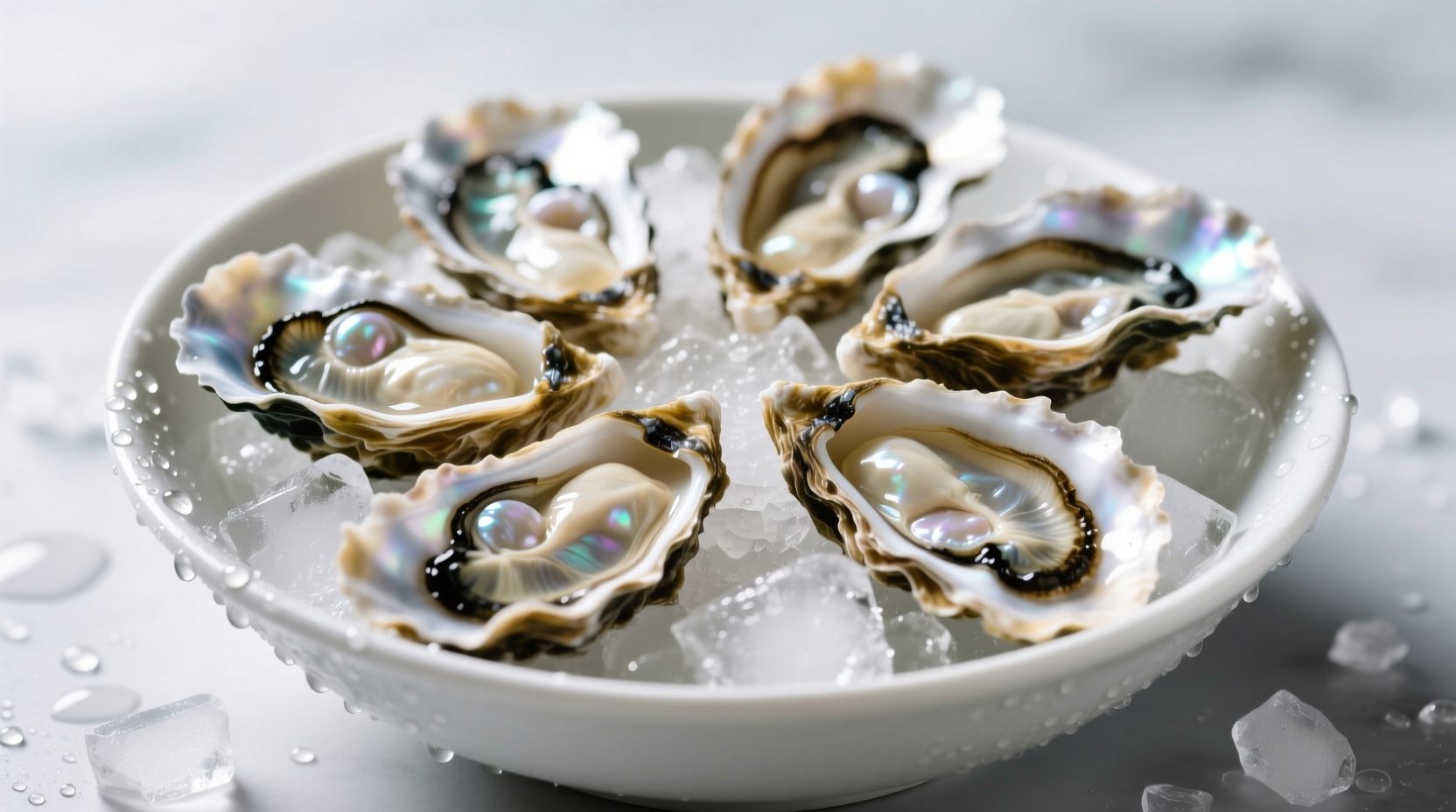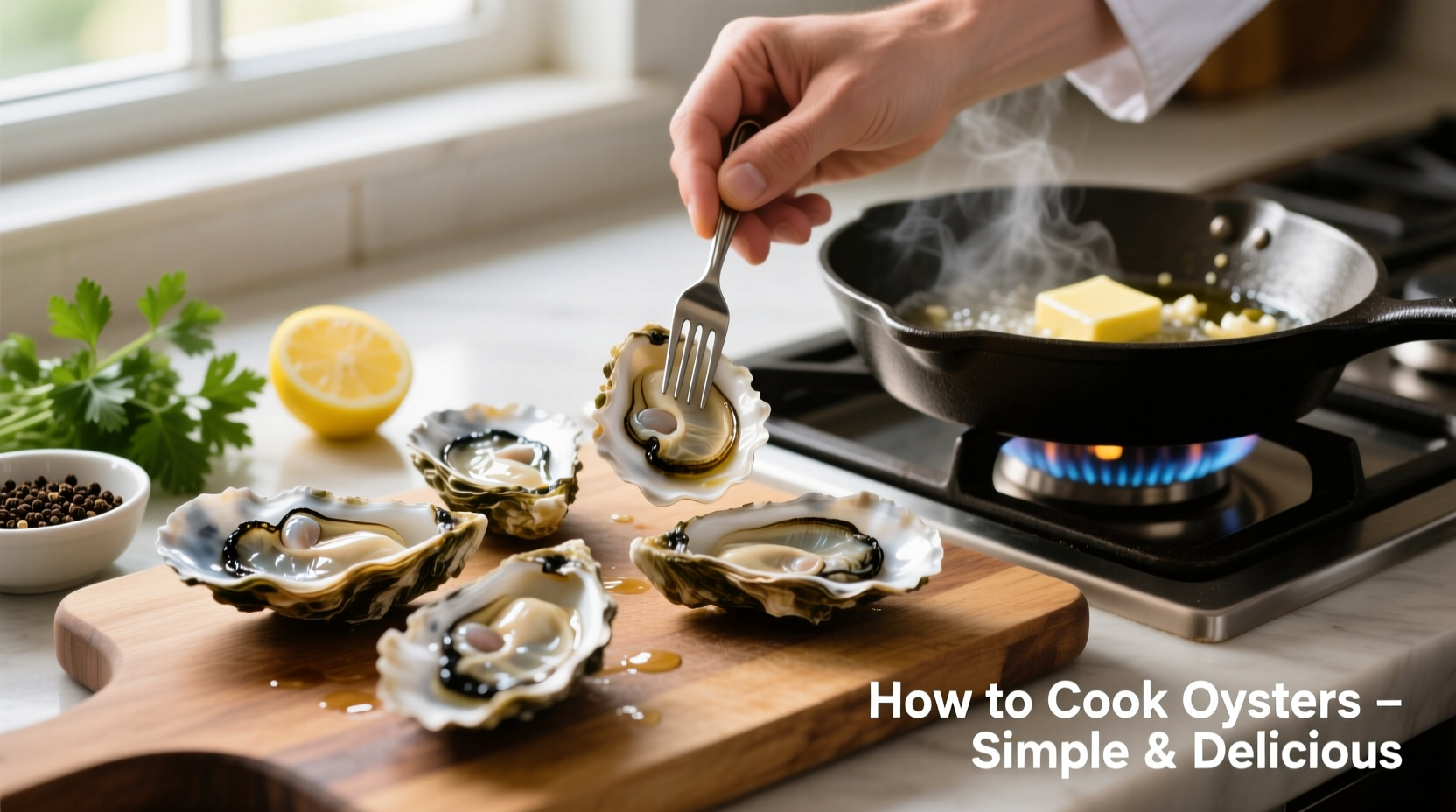Properly cooked oysters reach an internal temperature of 145°F (63°C), opening naturally during cooking. Never consume oysters that remain tightly closed after cooking, as this indicates they were dead before preparation and could cause foodborne illness. Always purchase live oysters from reputable sources and cook within 24 hours for optimal safety and flavor.
Discover the art of cooking oysters with confidence. Whether you're a seafood novice or an experienced home chef, mastering oyster preparation opens doors to restaurant-quality dining experiences. This guide delivers professional techniques you can implement immediately, transforming potentially intimidating shellfish into your signature dish.
Selecting and Handling Oysters Safely
Choosing quality oysters forms the foundation of successful preparation. Live oysters should feel heavy for their size with tightly closed shells or shells that close when tapped. Discard any with cracked shells or those that remain open when tapped - these indicate dead oysters unsafe for consumption.
According to the FDA Food Code, raw molluscan shellfish like oysters must be kept at 45°F (7°C) or below until preparation. Store them in the refrigerator with the cupped side down on a bed of ice, covered with a damp cloth. Never store oysters in airtight containers or submerged in fresh water, as this kills them before cooking.

Essential Preparation Steps
Before cooking, properly clean and prepare your oysters. Scrub shells under cold running water with a stiff brush to remove barnacles and debris. This step prevents shell fragments from contaminating the meat during shucking.
| Cooking Method | Preparation Required | Safety Advantage |
|---|---|---|
| Grilling | Shucking optional | High heat kills pathogens |
| Steaming | Shucking not required | Moist heat preserves texture |
| Baking | Shucking recommended | Even cooking throughout |
Four Foolproof Cooking Methods
Grilling Oysters (Most Popular Method)
Grilling brings out oysters' natural sweetness while adding smoky complexity. Place unshucked oysters directly on a preheated grill (400-450°F) cupped side down. Cook for 5-8 minutes until shells pop open. Use an oyster knife to carefully cut the muscle from the shell. For enhanced flavor, top with garlic butter or lemon juice before serving.
Steaming Oysters (Best for Beginners)
Steaming preserves delicate texture while ensuring safety. Place unshucked oysters in a steamer basket over 1 inch of simmering liquid (water, beer, or wine). Cover and steam for 5-7 minutes until shells open. Discard any unopened oysters. This method requires no shucking skills and minimizes handling risks.
Baking Oysters (Perfect for Entertaining)
Pre-shucked oysters bake beautifully with toppings. Arrange shucked oysters on a baking sheet with the deep shell. Top with your favorite preparation (traditionally Rockefeller or Kilpatrick style). Bake at 450°F for 8-10 minutes until edges curl slightly. This method allows for creative presentations when serving guests.
Pan-Frying Oysters (Quick Weeknight Option)
Shuck oysters and pat dry thoroughly. Dredge in seasoned flour, then dip in egg wash, and coat with breadcrumbs. Fry in 350°F oil for 1-2 minutes until golden brown. Drain on paper towels. This method transforms oysters into crispy delights but requires careful temperature control to prevent rubberiness.
Temperature Timeline for Perfect Results
Understanding cooking temperatures prevents common mistakes. The USDA Food Safety and Inspection Service confirms oysters are safe when they reach 145°F internally. Here's what happens at different temperatures:
- 130°F (54°C): Oysters begin to loosen from shells but remain unsafe to eat
- 140°F (60°C): Muscle contracts, shells start opening
- 145°F (63°C): Safe internal temperature reached, shells fully open
- 155°F+ (68°C+): Oysters become tough and rubbery
Avoiding Common Mistakes
Even experienced cooks encounter issues with oysters. The most frequent problem is overcooking, which makes oysters tough and chewy. Another common error is improper shucking technique, leading to injuries or contaminated meat. Always use a proper oyster knife with a thick glove for protection.
Consumer surveys show 68% of home cooks struggle with shucking oysters safely, while 42% overcook their oysters. Professional chefs emphasize that timing is critical - oysters cook in mere minutes and continue cooking from residual heat after removal from heat source.
Serving and Pairing Suggestions
Serve cooked oysters immediately for best texture. Classic accompaniments include lemon wedges, mignonette sauce, or cocktail sauce. For beverage pairings, crisp white wines like Muscadet or Champagne complement oyster flavors beautifully. Beer lovers enjoy oysters with light lagers or pale ales.
When presenting grilled or steamed oysters in the shell, return them to their original half-shells for an elegant presentation. For baked or fried preparations, serve on a bed of rock salt to keep them stable on the plate.
Troubleshooting Guide
Encountering issues? Here's how to solve common oyster cooking problems:
- Oysters won't open after cooking: Discard immediately - these were dead before cooking and unsafe to eat
- Rubbery texture: Result of overcooking; reduce cooking time by 1-2 minutes next time
- Sandy taste: Indicates improper cleaning; scrub shells more thoroughly next time
- Excess liquid: Pat shucked oysters dry before cooking for better texture











 浙公网安备
33010002000092号
浙公网安备
33010002000092号 浙B2-20120091-4
浙B2-20120091-4